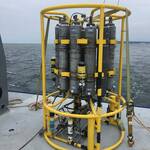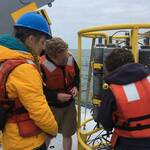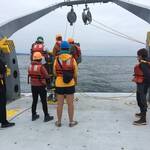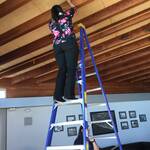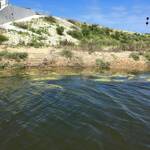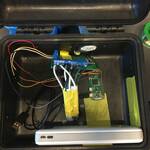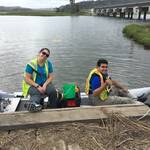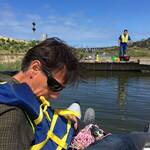Graduate student Angelica Rodriguez just published her research results in Geophysical Research Letters (with co-authors Giddings and Kumar (UW)) and is highlighted in the Scripps news. The paper, “Impacts of Nearshore Wave‐Current Interaction on Transport and Mixing of Small‐Scale Buoyant Plumes” uses idealized modeling of the interaction between small buoyant plumes (e.g., rivers, creeks, storm drains, etc.) and the surfzone to assess their interaction. Under strong waves and/or small outflows, buoyant outflow plumes were effectively trapped close to the coastline, spreading alongshore instead of cross-shore. This has major implications for transport of pollutants that typically accompany freshwater outflows and can hopefully improve beach water quality sampling and management.
The coupling between plumes and waves has been studied before on large scale plumes, but the interaction between smaller plumes and the surfzone – the region where surface gravity waves break near shore – has been investigated here for the first time. Using an idealized model domain representative of the scales of estuaries and plumes common in Southern California, we coupled a hydrodynamic model (ROMS) with a wave model (SWAN) using the COAWST modeling framework. This modeling framework allowed us to look at wave-current interactions and assess the impact of the surfzone on small buoyant outflows. Importantly, we found that vigorous mixing due to waves in the surfzone vertically mixed the buoyant outflow in the surfzone and wave-driven velocities reduced offshore plume propagation, while enhancing alongshore spreading.

